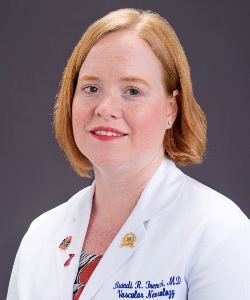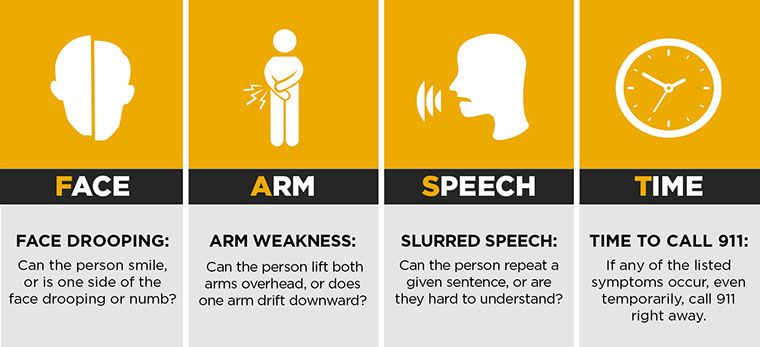Each year, more than 795,000 Americans suffer a stroke, and more than 130,000 of those cases are fatal. But most of these deaths are preventable, says Brandi French, MD, a stroke specialist at University of Missouri Health Care’s DNV GL Healthcare's Comprehensive Stroke Center.
Below are three tips to significantly reduce your risk of stroke.
Visit your doctor each year

Visiting your primary care provider at least once a year is a great way to keep an eye on your health. Your physician can monitor your health and ensure you receive recommended screenings to avoid or manage issues as they arise.
For example, your doctor will check your blood pressure and suggest steps to take if it's out of the normal range.
“High blood pressure is the single most important modifiable risk factor for stroke and needs annual screening,” French says. “These screens also look at other risk factors such as cholesterol levels, blood sugars, sleep apnea, etc.”
Cut out nicotine
What’s the most important thing you can do to prevent stroke? Break your nicotine habit if you have one.
Smoking damages your arteries and can block your blood flood, leading to not only strokes but also heart attacks.
“I tell my patients that smoking cessation is as effective or more effective than any medication I can prescribe,” French says.
If you’ve tried quitting before, try again. It often takes six or seven attempts to completely break the habit.
Make lifestyle changes
Following a healthy diet, getting regular exercise and moderate use of alcohol are key to reducing your risk of stroke.
“Those lifestyle modifications also help to improve the other risk factors for stroke, specifically hypertension, as well as blood glucose and cholesterol control,” French says. “And it’s hard to smoke when you are exercising.”
If you have trouble finding time to exercise, try to incorporate it into your workday. Try a standing desk, take a brisk walk during your lunch break or ride a bike to work during nice weather.
Avoid high-fat foods. They tend to be high in LDL cholesterol, which can contribute to artery blockages. This “bad fats” also raise your blood triglyceride levels (the amount of fat in your blood).
However, healthy fats such as Omega-3s can actually lower your blood triglycerides and reduce your risk of stroke and heart disease. These “good fats” are found in fish, nuts and seeds. Swapping out fried and processed fatty foods with those high in omega-3s will satisfy cravings while protecting you from stroke.
Another important factor in reducing your risk of stroke is to limit your alcohol intake. Heavy drinking makes blood clots more likely to form, but you don’t have to cut out alcohol completely to reduce your stroke risk.
The American Heart Association recommends limiting your alcohol consumption to one to two drinks per day for men and one drink per day for women.
Think F.A.S.T.
When someone is having a stroke, brain damage can begin within minutes. So it's important to know the symptoms of stroke and to act fast. Learn the guidelines below so you can spot when someone is having a stroke.




